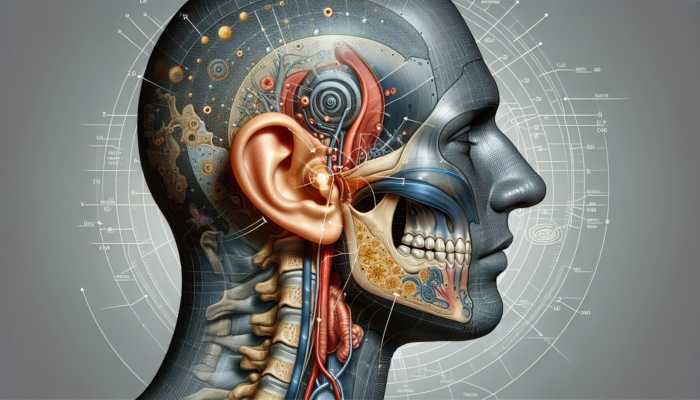Compliance Tips for UK Small Healthcare Practices

Comprehending the Complexities of UK Healthcare Regulations
Healthcare within the United Kingdom operates under a detailed and intricate framework of regulations aimed at guaranteeing the provision of safe and effective patient care. For small healthcare practices, grasping the subtleties of these regulations is absolutely essential for ensuring compliance and delivering high-quality patient care. This section thoroughly examines the pivotal legislative framework, the various regulatory bodies, critical compliance timelines, enforcement mechanisms, and the latest updates that influence the operational environment for healthcare providers.
Overview of Essential Legislative Framework

The Health and Social Care Act 2008 serves as a foundational pillar of UK healthcare legislation, establishing a robust regulatory framework aimed at enhancing care quality across diverse settings. This legislation mandates that every healthcare provider must duly register with the Care Quality Commission (CQC) and clearly outlines the standards that must be adhered to in order to protect patient welfare. The Act encompasses provisions related to patient safety, the quality of care, and the rights of patients, acting as a comprehensive guide for practices to follow diligently.
Moreover, additional relevant legislation, such as the Mental Health Act and the Children Act, stipulates specific guidelines that healthcare providers are obliged to follow. For small practices, an understanding of these legal frameworks is essential for navigating the complex legal landscape; non-compliance could lead to severe repercussions, including hefty fines or the revocation of operating licences. Incorporating regular training sessions and updates on these laws into practice routines is vital, ensuring that all staff members are well-informed about their respective responsibilities.
Understanding Key Regulatory Bodies in Healthcare
The Care Quality Commission (CQC) is the principal regulatory authority responsible for overseeing healthcare providers in England. Its responsibilities include conducting inspections of facilities, enforcing compliance with the Health and Social Care Act, and ensuring that patients receive care that is safe, effective, and dignified. Small healthcare practices should adopt compliance strategies such as regular self-assessments against CQC standards, focusing on critical areas such as safety, effectiveness, caring, responsiveness, and leadership.
In addition to the CQC, entities like the National Health Service (NHS) and local clinical commissioning groups (CCGs) play significant roles in shaping healthcare policies and practices. These organisations provide additional resources and guidance to assist small practices in aligning with national standards. Actively engaging with these bodies can yield invaluable insights into best practices and effective compliance strategies.
Understanding Compliance Deadlines for Healthcare Providers
Adhering to UK healthcare regulations necessitates compliance with various deadlines related to registration, reporting, and audits. For example, healthcare providers are required to renew their registration with the CQC at least on an annual basis. Additionally, timely submission of reports concerning patient safety incidents, financial audits, and performance metrics is crucial. Staying informed about these key dates is essential for small practices to avoid non-compliance, which could result in inspections and penalties.
Establishing and regularly updating a compliance calendar that outlines these critical deadlines can help streamline operations and ensure that all regulatory requirements are met punctually. This proactive approach not only enhances operational efficiency but also fosters a culture of compliance within the practice, ultimately benefiting patient care and practice reputation.
Exploring Enforcement Mechanisms in Healthcare Regulations

Enforcement of healthcare regulations in the UK involves a multifaceted approach that includes inspections, penalties, and potential legal actions. The CQC carries out regular inspections of healthcare facilities to evaluate compliance with established standards. Non-compliance can lead to various consequences, including enforcement actions that may range from warnings to financial penalties or even the closure of the practice.
For small healthcare practices, understanding these enforcement mechanisms is vital. Developing robust internal policies and procedures to tackle compliance challenges can mitigate risks associated with inspections and ensure that the practice operates within the legal framework. Conducting frequent internal audits and training staff can prepare teams for potential inspections, thereby nurturing a culture of accountability and compliance within the practice.
Staying Informed of Recent Changes and Legislative Updates
The landscape of UK healthcare regulations is continually evolving, with recent amendments reflecting shifts in policy focus and community health needs. For instance, modifications to the Health and Care Act 2022 have introduced new provisions regarding integrated care systems, which aim to streamline services and enhance patient outcomes. Small practices must remain informed about these changes to ensure compliance while also capitalising on opportunities for improved service delivery.
Furthermore, the COVID-19 pandemic has prompted numerous temporary regulatory adaptations, including modifications to telemedicine regulations and infection control standards. Keeping abreast of these updates is crucial for maintaining compliance and delivering optimal care in an ever-evolving healthcare environment. Engaging with professional associations and attending seminars can facilitate ongoing education about regulatory changes and best practices.
Ensuring Robust Data Protection and GDPR Compliance
Data protection is of utmost importance within the healthcare sector, where sensitive patient information is routinely managed. The General Data Protection Regulation (GDPR) alongside the UK Data Protection Act 2018 establishes stringent guidelines for handling personal data in healthcare practices. For small healthcare practices, ensuring compliance with these regulations is not merely a legal obligation; it is also a critical aspect of preserving patient trust and safeguarding confidentiality.
Effective Management of Patient Data

The effective management of patient data is vital for protecting sensitive information and ensuring compliance with UK GDPR. Small healthcare practices should implement comprehensive data handling procedures that encompass data collection, secure storage, and sharing protocols. This includes obtaining patient consent prior to collecting or processing any data. Clear policies must outline how long data will be retained and the circumstances under which it may be shared with third parties.
Practices should invest in secure data storage solutions, such as encrypted electronic health records and secure physical storage for paper documents. Conducting regular audits of data handling practices can identify potential vulnerabilities and ensure compliance with UK regulations. Moreover, having a well-defined data breach response plan is essential for minimising the impact of any data security incidents, thereby safeguarding patient information effectively.
Establishing Data Breach Protocols
In the unfortunate event of a data breach, having a well-structured protocol in place can significantly reduce potential damage. Under UK GDPR, practices are obligated to report any breaches to the Information Commissioner’s Office (ICO) within 72 hours if they pose a risk to patient safety. This necessitates a thorough understanding of what constitutes a data breach and the immediate actions to undertake when one occurs.
Small healthcare practices should form an incident response team responsible for managing data breaches, which includes identifying the nature of the breach, assessing the impact, and notifying affected patients. Regular training on data breach protocols ensures that staff are prepared to respond swiftly and effectively, thereby minimising potential harm to both patients and the practice’s reputation.
Comprehensive Staff Training on Data Protection
Training staff on data protection principles is imperative for ensuring compliance with GDPR. Small healthcare practices should conduct regular training sessions to educate employees about their responsibilities surrounding patient data management. This includes understanding data protection rights, recognising the importance of confidentiality, and knowing how to identify potential data breaches.
Providing continuous professional development (CPD) opportunities related to data protection can further enhance staff knowledge and skills. Engaging external experts to deliver tailored training can provide fresh insights and practical strategies for maintaining compliance. This commitment to ongoing education fosters a culture of data protection that permeates the practice, ultimately enhancing overall patient care and trust.
Maintaining High Infection Control Standards
Infection control is a critical aspect of delivering safe healthcare services. Adhering to UK-specific infection control guidelines is essential for small healthcare practices to prevent the transmission of infections and protect patient health. This section outlines the necessary protocols, practices, and standards that practices must implement to ensure compliance with infection control regulations.
Comprehensive Overview of UK Infection Control Guidelines
The UK has established extensive infection control guidelines, primarily issued by Public Health England and the National Institute for Health and Care Excellence (NICE). These guidelines delineate best practices for preventing and controlling infections within healthcare environments. Small practices must familiarise themselves with these standards, concentrating on critical areas such as hand hygiene, the use of personal protective equipment (PPE), and thorough environmental cleaning.
Implementing a comprehensive infection control programme necessitates regular risk assessments to identify potential sources of infection within the practice environment. Developing standard operating procedures (SOPs) that align with national guidelines can serve as a blueprint for maintaining high standards of infection control. Ongoing training for staff on these protocols is essential to ensure adherence and mitigate risks effectively.
Emphasising Staff Hygiene Practices
Hygiene practices among staff play a pivotal role in preventing infections. Small healthcare practices should establish stringent hygiene protocols that encompass handwashing, appropriate use of PPE, and the cleanliness of workspaces. Hand hygiene, in particular, should be emphasised, with clear guidelines on when and how to wash hands effectively.
Incorporating regular training sessions on hygiene standards can reinforce the significance of cleanliness and safe practices among staff members. Ensuring that adequate supplies of hand sanitiser, gloves, and masks are readily available can facilitate compliance with hygiene protocols. Monitoring adherence to these practices through regular audits can help identify areas for improvement and enhance overall infection control efforts within the practice.
Ensuring Proper Equipment Sterilisation
Proper sterilisation of equipment is critical for preventing the spread of infections within healthcare settings. Small practices must adhere to stringent sterilisation protocols that comply with UK standards, including the use of autoclaves and other effective sterilisation methods. It is vital to ensure that all reusable medical instruments are thoroughly cleaned and sterilised between patients to minimise contamination risks.
Developing a detailed equipment sterilisation schedule that outlines the frequency and methods of sterilisation can significantly enhance compliance. Regular training sessions should be conducted to ensure that all staff understand the importance of sterilisation and the correct procedures to follow. Maintaining comprehensive records of sterilisation processes can also aid in demonstrating compliance during inspections.
Implementing Robust Waste Management Protocols
Effective waste management is paramount in preventing disease transmission within healthcare environments. Small practices must develop strong waste management protocols that comply with UK regulations concerning the disposal of clinical waste. This includes the segregation of waste into appropriate categories, such as sharps, infectious waste, and general waste.
Mandatory staff training on waste management practices is essential, ensuring that all employees comprehend the significance of correct disposal methods. Implementing clear labelling and colour-coded bins can further aid in maintaining compliance and enhancing staff awareness. Regular audits of waste management practices can help identify areas for improvement and ensure adherence to regulations effectively.
Establishing Effective Patient Isolation Procedures
Implementing effective patient isolation procedures is critical for controlling the spread of infections within healthcare settings. Small practices must develop clear protocols for isolating patients who present with infectious diseases. This includes designating specific areas within the practice for isolation and ensuring that staff are adequately trained on the procedures to follow.
Regular assessment of isolation protocols is crucial to ensure they remain effective and compliant with UK guidelines. Collaborating with local health authorities can provide additional support and resources for managing patients with infections. By fostering a culture of vigilance and preparedness, small practices can significantly enhance their infection control efforts and safeguard patient health.
Commitment to Staff Training and Development
Ongoing staff training and development are essential for maintaining a compliant and efficient healthcare practice. The dynamic nature of healthcare regulations necessitates a steadfast commitment to continuous education for all employees. This section delves into the mandatory training requirements, the importance of continuing professional development, and the significance of maintaining precise training records.
Understanding Mandatory Training Requirements
In the UK, healthcare staff are required to undergo mandatory training to ensure they are equipped with the necessary skills and knowledge to provide safe and effective care. This training often encompasses essential topics such as basic life support, safeguarding vulnerable adults and children, and infection prevention and control. Small practices must prioritise these training requirements to ensure compliance and maintain high standards of patient care.
Developing a comprehensive training programme that outlines mandatory training sessions can help practices remain organised and ensure all staff complete their training within the designated timeframes. Regular refresher courses should be incorporated to keep knowledge current and reinforce best practices. Collaborating with external training providers can enhance the quality and diversity of training opportunities available to staff members.
Emphasising the Importance of Continuing Professional Development
Continuing professional development (CPD) is vital for healthcare professionals to stay updated on the latest advancements in their respective fields. For small healthcare practices, encouraging participation in CPD activities can significantly enhance staff competence and confidence. This may include attending workshops, enrolling in online courses, or engaging in professional networks.
Practices should foster a culture that values CPD by providing resources and support for staff to pursue their development goals. Regular discussions about CPD achievements during team meetings can further motivate and engage employees. By prioritising CPD, small practices can ensure their teams are well-equipped to meet the evolving demands of healthcare services.
Maintaining Accurate Training Records
Maintaining accurate training records is a legal requirement for healthcare practices in the UK. These records should document all completed training sessions, including dates, topics covered, and attendee names. Small practices must ensure these records are easily accessible and up to date, as they may be requested during inspections or audits.
Implementing a digital record-keeping system can streamline this process and enhance the overall efficiency of record management. Regular reviews of training records can help identify gaps in training coverage and inform future training initiatives. By prioritising accurate record-keeping, small practices can demonstrate their commitment to compliance and staff development.
Prioritising Patient Safety and Care Quality
Ensuring patient safety and care quality is fundamental to effective healthcare practice. Compliance with UK patient safety standards is critical for small healthcare practices to enhance patient outcomes and build trust within the community. This section explores the significance of adhering to safety standards, implementing effective incident reporting systems, and utilising patient feedback to improve care quality.
Understanding UK Patient Safety Standards
The UK has established rigorous patient safety standards, primarily governed by the CQC and NHS guidelines. Small practices must adhere to these standards to guarantee that patients receive safe, effective care. This includes implementing protocols for medication management, accurate patient identification, and clinical handovers.
Regular training sessions on patient safety standards are essential for all staff to ensure they understand their roles in upholding safety. Furthermore, conducting regular audits of safety practices can help identify areas for improvement and reinforce a culture of safety within the practice. Engaging in collaborative partnerships with local healthcare organisations can also enhance safety initiatives and facilitate resource sharing.
Implementing Effective Incident Reporting Systems
Establishing effective incident reporting systems is crucial for fostering a culture of safety within healthcare practices. Small healthcare practices should develop clear protocols for reporting incidents, near misses, and adverse events. Encouraging staff to report incidents without fear of retribution promotes transparency and significantly enhances patient safety.
Training staff on the incident reporting process is essential to ensure compliance and encourage participation. Regular reviews of incident reports can help identify trends and areas for improvement, informing future safety initiatives. By prioritising incident reporting, small practices can demonstrate their unwavering commitment to continuous improvement and patient safety.
Utilising Patient Feedback Mechanisms for Improvement
Utilising patient feedback is an invaluable tool for enhancing care quality in small healthcare practices. Establishing mechanisms for collecting feedback, such as surveys or suggestion boxes, enables practices to gauge patient satisfaction and identify areas for enhancement. Actively engaging with patients to discuss their experiences fosters a culture of openness and collaboration.
Regularly reviewing and analysing patient feedback can inform practice improvements and ensure that patient voices are heard. Sharing outcomes and changes made in response to feedback with patients can further enhance trust and engagement. By prioritising patient feedback, small practices can improve care quality and align their services with the evolving needs of patients.
Ensuring Financial Compliance and Conducting Audits
Financial compliance is essential for the sustainability and accountability of small healthcare practices. Adhering to financial regulations and undergoing regular audits can help practices maintain transparency and build trust with patients as well as regulatory bodies. This section explores the significance of financial record-keeping, preparing for audits, implementing fraud prevention measures, and ensuring regulatory reporting.
Importance of Accurate Financial Record Keeping
Maintaining accurate financial records is crucial for compliance with UK law and for effective management of healthcare practices. Small practices must keep detailed records of all financial transactions, including income, expenses, and payroll. This ensures that practices can manage their finances effectively while also demonstrating compliance during audits.
Implementing a robust accounting system can enhance accuracy and streamline financial processes. Regular reviews of financial records can help identify discrepancies and inform decision-making. By prioritising thorough financial record-keeping, small practices can enhance their operational efficiency and ensure compliance with regulatory requirements.
Preparing for Financial Audits
Preparing for financial audits is a critical process for small healthcare practices. Conducting regular internal audits can help identify potential issues before external audits occur, ensuring compliance and alleviating stress during the audit process. Small practices should establish a clear timeline for audits and ensure that all relevant documentation is organised and readily available.
Engaging external auditors can provide an objective assessment of financial practices and ensure compliance with UK regulations. Regular training for staff involved in financial management can also enhance preparedness and ensure that everyone understands their roles during audits. By prioritising audit preparation, small practices can demonstrate their commitment to transparency and accountability in their financial dealings.
Implementing Effective Fraud Prevention Measures
Establishing robust fraud prevention measures is vital for safeguarding the financial integrity of small healthcare practices. Small practices should develop clear protocols for financial transactions, which include authorisation processes and segregation of duties to minimise opportunities for fraud. Regular financial audits can help identify discrepancies and reinforce accountability across the practice.
Training staff on recognising and reporting potential fraud is critical for fostering a culture of vigilance and integrity. Collaborating with local health authorities can provide additional resources and support for fraud prevention initiatives. By prioritising fraud prevention measures, small practices can protect their financial resources and maintain compliance with regulatory requirements effectively.
Understanding Regulatory Reporting Obligations
Timely and accurate submission of financial reports to regulatory bodies is a crucial aspect of financial compliance within healthcare. Small practices are required to submit various reports, including annual accounts and tax returns, to demonstrate compliance with UK regulations. Establishing a clear timeline for reporting can help ensure that all submissions are made punctually.
Utilising accounting software can streamline the reporting process and enhance accuracy. Regularly reviewing reporting requirements and engaging with external experts can ensure that practices remain informed about any changes in regulations. By prioritising regulatory reporting, small practices can maintain compliance and build trust with regulatory bodies and stakeholders alike.
Enhancing Accessibility and Promoting Equality in Healthcare
Ensuring accessibility and equality in healthcare services is a fundamental responsibility for all healthcare providers. Compliance with the UK Equality Act and adherence to accessibility standards are critical for small healthcare practices to deliver inclusive and equitable care. This section explores the importance of meeting these regulations and offers guidance on cultural competency training for staff members.
Complying with the UK Equality Act
The UK Equality Act 2010 establishes the framework for ensuring that all individuals have equal access to healthcare services. Small healthcare practices must comply with this Act by ensuring that discrimination based on protected characteristics, such as age, disability, race, and gender, is strictly prohibited.
Conducting regular assessments of practice policies and procedures can help identify potential barriers to access. Providing training for staff on equality and diversity issues is essential for fostering a culture of inclusivity and ensuring compliance with the Act. By prioritising compliance with the Equality Act, small practices can enhance patient experience and demonstrate their commitment to delivering equitable care to all patients.
Meeting Accessibility Standards in Healthcare
Adhering to UK accessibility standards is a critical component of providing inclusive healthcare services. Small practices must ensure that their facilities are accessible for individuals with disabilities, which includes wheelchair access, appropriate signage, and assistance for those with sensory impairments. This may necessitate physical modifications to the practice environment to enhance accessibility for all patients.
Regular audits of accessibility can help identify areas for improvement and ensure compliance with regulations. Providing staff training on how to assist patients with disabilities can further enhance accessibility efforts. By prioritising accessibility, small practices can create a welcoming environment for all patients and improve their overall care experiences.
Implementing Cultural Competency Training
Cultural competency training is vital for ensuring that healthcare staff are equipped to provide effective care to diverse patient populations. Small practices should establish training programmes that address cultural differences, communication barriers, and the importance of recognising and respecting individual patient needs.
Regular engagement with local communities to understand their unique cultural contexts can inform the development of tailored training programmes. By prioritising cultural competency, small practices can enhance patient satisfaction and ensure that care is delivered in a respectful and sensitive manner. This commitment to inclusivity not only aligns with regulations but also fosters stronger patient-provider relationships.
Ensuring Environmental Health and Safety Compliance
Compliance with environmental health and safety regulations is essential for maintaining a safe and healthy healthcare practice. Small healthcare practices must adhere to UK health and safety regulations, implement effective waste management practices, and ensure emergency preparedness. This section offers valuable insights into these critical aspects of environmental health and safety.
Understanding UK Health and Safety Regulations
Compliance with UK health and safety regulations is paramount for small healthcare practices to ensure the safety of both staff and patients. This encompasses a wide array of regulations, including the Health and Safety at Work Act, which mandates that employers provide a safe working environment. Small practices must conduct regular risk assessments to identify potential hazards and implement measures to mitigate those risks effectively.
Training staff on health and safety protocols is essential for ensuring compliance and promoting a culture of safety within the practice. Establishing clear reporting procedures for accidents and incidents can further enhance workplace safety. By prioritising health and safety compliance, small practices can create a secure environment for all stakeholders involved.
Implementing Effective Waste Management Practices
Effective waste management practices are critical for preventing environmental contamination and ensuring compliance with UK regulations. Small healthcare practices must develop robust waste management protocols that adhere to guidelines for hazardous and clinical waste disposal. This includes proper segregation, secure storage, and safe disposal methods to minimise risks to public health.
Conducting regular audits of waste management practices can help identify areas for improvement and ensure adherence to regulations. Training staff on waste management procedures is essential to promote compliance and environmental responsibility. By prioritising waste management, small practices can protect both public health and the environment effectively.
Establishing Comprehensive Emergency Preparedness Plans
Emergency preparedness is a vital aspect of environmental health and safety within healthcare settings. Small practices must develop comprehensive emergency plans that address potential crises, including natural disasters, pandemics, and other emergencies. Regular drills and training sessions can help ensure that staff are prepared to respond effectively to emergencies.
Collaborating with local emergency services can provide additional resources and support for developing emergency preparedness plans. By prioritising preparedness, small healthcare practices can enhance their resilience and ensure that patient safety remains a top priority during times of crisis.
Navigating Technology and Telemedicine Compliance
The integration of technology and telemedicine into healthcare practices is rapidly evolving, presenting both opportunities and challenges for compliance. Small healthcare practices must navigate the regulatory landscape surrounding electronic health records and telemedicine to ensure compliance while delivering high-quality care. This section explores key compliance considerations for technology and telemedicine in healthcare.
Ensuring Compliance with Electronic Health Records
Compliance with UK standards for electronic health records (EHR) is essential for small healthcare practices to enhance patient care and streamline operations. Practices must ensure that their EHR systems comply with GDPR and data protection regulations, thereby safeguarding patient information and maintaining confidentiality.
Regular training for staff on the use of EHR systems is critical to ensure compliance and maximise the benefits of technology. Implementing robust data security measures, including encryption and access controls, can further enhance compliance efforts. By prioritising EHR compliance, small practices can improve patient care and operational efficiency significantly.
Navigating Telemedicine Regulations
Telemedicine has become an increasingly important aspect of healthcare delivery, particularly in light of recent global events. Small practices must navigate the regulatory framework surrounding telemedicine to ensure compliance with UK guidelines. This includes understanding the legal requirements for remote consultations, obtaining patient consent, and adhering to data protection protocols.
Establishing clear protocols for telemedicine practices can help ensure compliance and enhance patient experiences. Regular training for staff on telemedicine best practices is essential to maximise the benefits of this technology. By prioritising telemedicine compliance, small practices can expand their reach and provide convenient care options for patients effectively.
Implementing Robust Cybersecurity Measures
Implementing strong cybersecurity measures is vital for protecting patient data and ensuring compliance with data protection regulations. Small healthcare practices must prioritise cybersecurity by investing in firewalls, antivirus software, and training staff to recognise phishing attempts and other cyber threats.
Conducting regular risk assessments can help identify vulnerabilities and inform security measures. Engaging with IT specialists can provide additional resources and support for enhancing cybersecurity efforts. By prioritising cybersecurity, small practices can safeguard sensitive patient information and maintain compliance with legal requirements effectively.
Frequently Asked Questions (FAQs)
What are effective compliance tips for small healthcare practices?
Effective compliance tips for small healthcare practices include understanding UK regulations, ensuring comprehensive staff training, maintaining accurate records, implementing robust data protection measures, and fostering a culture of safety and quality care.
Why is it important to understand UK healthcare regulations?
Understanding UK healthcare regulations is essential for ensuring compliance, enhancing patient safety and care quality, and protecting the practice from legal repercussions and potential penalties.
How can small practices maintain patient data confidentiality?
Small practices can maintain patient data confidentiality by implementing robust data protection policies, obtaining patient consent, using secure data storage solutions, and conducting training for staff on data handling practices.
What role does the Care Quality Commission play in healthcare compliance?
The Care Quality Commission (CQC) is the regulatory body responsible for ensuring that healthcare providers meet established standards for safety and quality of care through thorough inspections and compliance assessments.
What are the consequences of non-compliance in healthcare?
Non-compliance in healthcare can lead to severe penalties, including fines, loss of operating licences, and damaging the practice’s reputation, which can ultimately impact patient trust and care quality.
How crucial is staff training for compliance?
Staff training is vital for compliance as it ensures that employees are aware of regulations, best practices, and their responsibilities, fostering a culture of safety and accountability within the practice.
What are the key components of effective incident reporting systems?
Effective incident reporting systems should be transparent, encourage employee participation, involve clear reporting procedures, and facilitate regular reviews to identify trends and opportunities for improvement.
How can small practices enhance patient safety?
Small practices can enhance patient safety by adhering to UK safety standards, implementing incident reporting systems, fostering a culture of safety, and regularly training staff on best practices.
What are the best practices for waste management in healthcare?
Best practices for waste management in healthcare include proper segregation of waste, comprehensive staff training on disposal methods, regular audits, and strict adherence to UK regulations regarding clinical waste.
What cybersecurity measures should small healthcare practices implement?
Small healthcare practices should implement cybersecurity measures such as firewalls, antivirus software, training employees to recognise cyber threats, and conducting regular risk assessments to safeguard patient data.































































